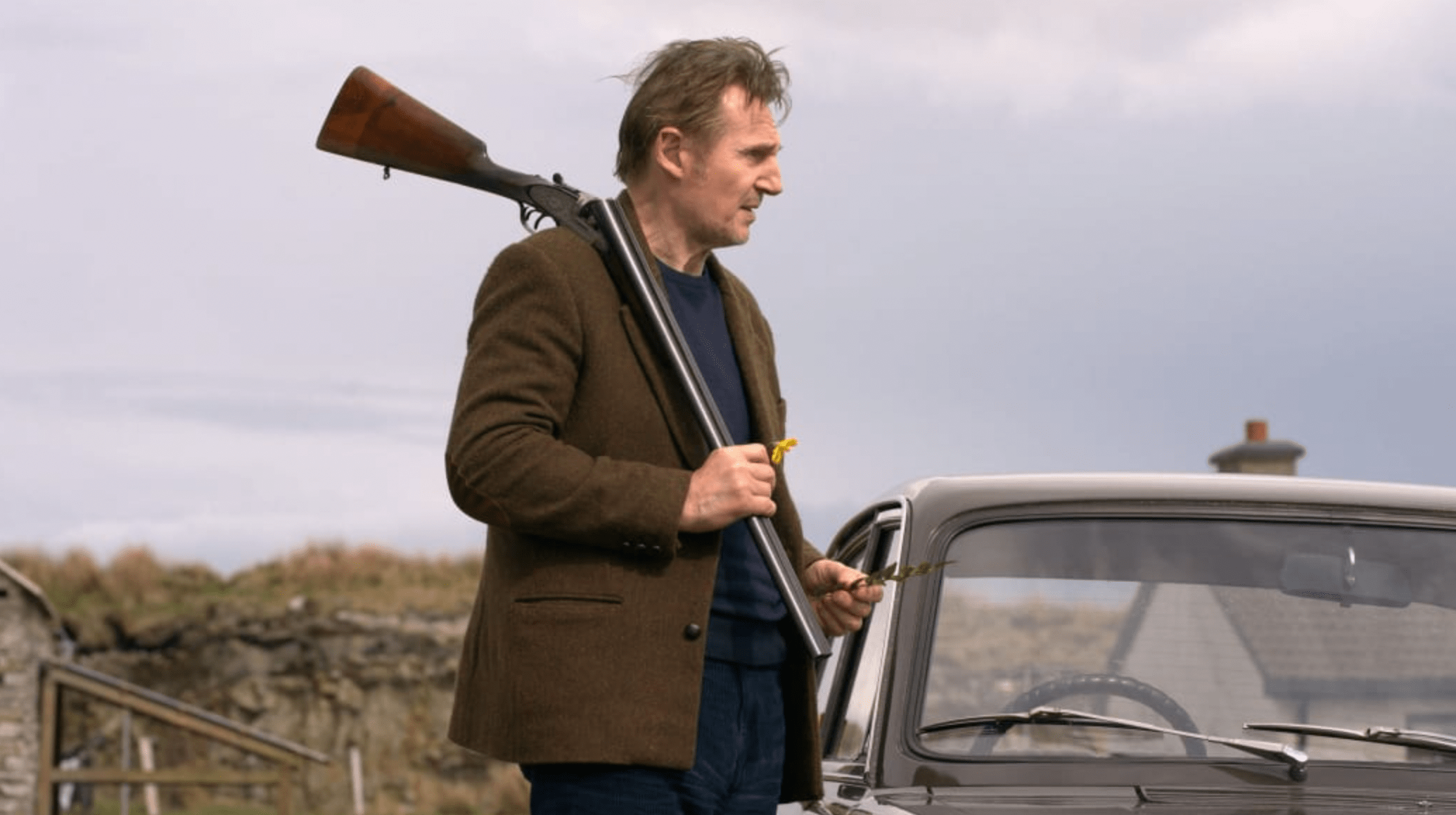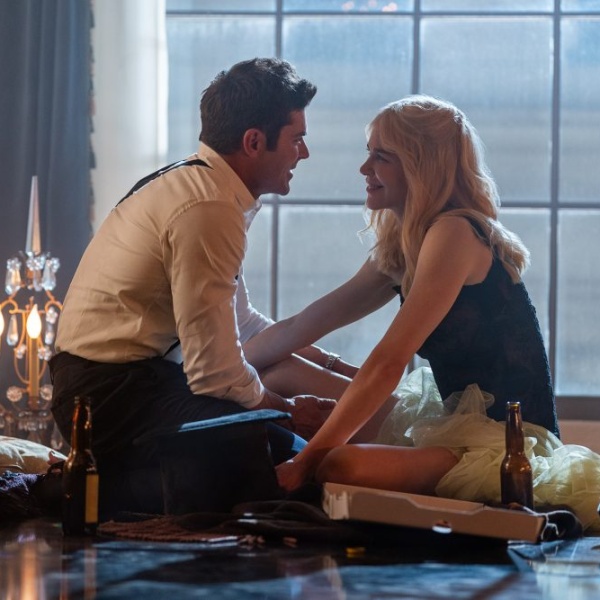At some point during the first act of Robert Lorenz’s handsome but egregiously hackneyed “In the Land of Saints and Sinners,” which is maybe the 900th Liam Neeson movie about a weary hitman/rancher/fixer/truck driver/ex-cop/very tall person who decides to take matters into his own hands when some bad guys step over the line, the prolific Irish actor turns to one of his scene partners and sighs: “There’s more to me than this, and I’d like folks to see it.”
Needless to say, the first part of that sentence is much easier to believe than the second.
Cast here as a regretful assassin who tries to change his ways at the height of the Troubles (only to get mixed up with a trio of IRA terrorists who take cover in his quaint coastal village after a car bomb goes wrong), Neeson again reaffirms what “Taken” director Pierre Morel was the first to weaponize: He can’t help but inject a low-spoken hauntedness into every role he plays. It’s the open secret behind the “creaky renegade” phase of Neeson’s career. That palpable degree of hurt, and its related potential for violence, lends itself perfectly to the sort of characters who can’t wash their souls clean without getting a little more blood on their hands.
When Neeson warned some kidnappers that he had “a particular set of skills,” he didn’t have to enumerate what those skills were for people to accept that he wasn’t lying about them. And when “In the Land of Saints and Sinners” protagonist Finbar Murphy insists that he isn’t just a killer, we take him at his word, even if the dog-eared copy of “Crime and Punishment” he carries around with him is the best evidence we get of his buried dimensions.
It’s the “I’d like folks to see it” bit that raises an eyebrow — and makes for the only line in Terry Loane and Mark Michael McNally’s paint-by-numbers screenplay that sounds less convincing because of the actor saying it. Finbar certainly makes an effort to prove that he’s not just a hired gun, but the only person he’s really hoping to persuade is himself. For one thing, his folksy neighbors are all under the impression that he’s a harmless widower. For another, Finbar’s sudden pivot towards righteousness is precisely what threatens to expose the fact that he’s shot more people than he can count.
As for Neeson, well, he couldn’t possibly be less interested in showing us a side of himself that we haven’t seen before.
At least the scenery is different this time, as the emerald green hills of Neeson’s homeland are a refreshing change of pace from the anonymous stretches of middle America where most of his recent thrillers have been set. A longtime producer who previously directed Neeson in 2021’s “The Marksman,” Lorenz will probably never abandon his aesthetic fealty to frequent collaborator Clint Eastwood, but the coastlines of County Donegal allow him to disguise that devotion under a layer of Fordian drag; cinematographer Tom Stern works to ensure that the (real) village of Gleann Cholm Cille is almost as charming here as the (fake) hamlet of Inisherin was in the Martin McDonagh film that put it on the map. “In the Land of Saints and Sinners” is often so lush to look at it that it could almost be confused for the kind of movies that Neeson used to make.
But things have to go sideways in Belfast before this story can make its way out to the countryside. It’s there, in the heart of Northern Ireland, where an IRA firebrand called Doireann (“The Banshees of Inisherin” star Kerry Condon, smoke coming out of her nostrils in every scene) causes a bit more chaos than she means to with her latest car bombing when a mother and her children stumble into the blast radius at the last second. Doireann tries her best to move the kids out of the way before they become collateral damage (she’s not a complete monster), but she doesn’t seek forgiveness when things go sideways, only a safe place to lie low for a little while.
Lucky for Doireann, her greasy worm of a younger brother lives in the sleepiest pocket of the country, and so she and her cohorts hightail it to Donegal as fast as they can — so fast, in fact, that their car skids into the wooden sign welcoming people to Gleann Cholm Cille, where the incident immediately becomes the most exciting crime the local cop has encountered in a long while. I wouldn’t put much faith in his ability to solve it: Vinnie the Garda (a wistful but cuddly Ciarán Hinds) is more of a Mayfield-like security blanket than he is a competent police officer, to the point where he can’t even tell that his crack shot of a best friend — good old Finbar Murphy — has killed more people than the potato famine. Vinnie might like to think that his pretty little burg has been spared from the Troubles, but there’s a darkness on the edge of this one-pub town, and it’s about to explode onto Main Street.
Nothing bad would have happened if not for Finbar’s abrupt decision to do some good. The hitman’s moral awakening is triggered when his latest victim, on his knees in the forest where he’s just been forced to dig his own grave, sings a few bars of a soul-piercing tune. That’s all it takes for Finbar to realize “the world turned me into somebody I didn’t recognize” after he came home from the war. Well, that, and the head-shaking disgust he feels whenever he looks at the next generation of Irish hitmen, embodied here by a young sociopath named Kevin (“Game of Thrones” actor Jack Gleeson, totally unrecognizable and fully self-possessed despite revisiting the archetype that made him famous).

But anyone who’s ever seen a movie before knows that a hired gun can’t just walk away from their past — they have to shoot their way out of it, and that’s exactly what Finbar decides to do when he discovers that Doireann’s slimy brother is abusing the local bartender’s nine-year-old daughter. Killing people isn’t the problem, it’s just that Finbar has been killing the wrong ones. Alas, that moral arithmetic doesn’t sit very well with Doireann, and she becomes determined to exact revenge on Finbar with extreme prejudice, even if she has to come out of hiding in order to do so.
It’s a shame these characters are so determined to shoot each other, because that animus blinds them to a common bond that no one else in Gleann Cholm Cille might be able to understand: They’re both trying to sin their way to salvation. This movie never really gives them that chance. So far as lightly metaphorical — or at least microcosmic — distillations of sectarian violence are concerned, “In the Land of Saints and Sinners” is so disinterested in the nuts and bolts of Northern Ireland’s political divide that it makes “The Banshees of Inisherin” seem like “The Wind That Shakes the Barley” by comparison. Lorenz’s film opens with a title card that reads “Decades of civil unrest have exploded into armed conflict,” and that’s about as detailed as it gets.
Perhaps that’s because this story isn’t rooted in the north of Ireland so much as it is in the American West. The vaguely Catholic overtone is the lone trope here that doesn’t feel like it’s been exported from overseas, and even that only brings itself to bear in the scene where a gunshot victim crawls into a nearby church to die (cue: a thousand flickering votive candles and a gust of choral chanting). The only dissonance in Diego Baldenweg’s sweet and jangly score is owed to the fact that it doesn’t play out over wide shots of Monument Valley, while the script’s hoariest choices — which include a smiling African refugee who came to County Donegal in an ironic bid to escape his unspecified war torn homeland — feel out of place without a lovably racist Clint Eastwood character around to lend them some grizzled moral context.
But the unrepentant movie-ness of “In the Land of Saints and Sinners” can also be part of its charm, especially when it comes to the cast members whose performances aren’t as stale as their parts. Condon was this close to being typecast as a tough beauty with a heart of gold, but she embodies Doireann with enough piss and vinegar to put the devil to shame; Condon brings so much snarl to the role that she’s able to mine a full-bodied character from a string of empty threats.
Gleeson is put in the similarly thankless position of playing the sociopathic hotshot who becomes our best measure of Finbar’s salvation, and while the Joffrey Baretheon vibes are strong with this one, the actor continues to find rare nuance in the little shits he loves to play. Sure, you roll your eyes when this young psycho killer reveals that his real dream is to leave Ireland behind and try to make it as a musician in California (good luck with that, kid), but Gleeson is as earnest with the character’s virtues as he is with his vices, and I was eventually charmed by Kevin’s obliviousness to his own cliché. It’s the kind of detail that makes “In the Land of Saints and Sinners” a cut above the average Neeson thriller, even if Neeson himself seems more at peace than ever with being a hired gun.
Grade: C+
A Samuel Goldwyn Films release, “In the Land of Saints and Sinners” is now playing in theaters.






